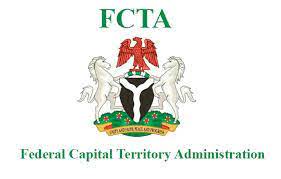BODE OLAGOKE writes on the perennial fl ood disasters that are fast becoming a national malady, and stresses the need for urgent attention.
Th ough, fl ood tragedy is not limited to Nigeria, history has however shown that advanced countries, at one time or the other, have had their own shares of the natural occurrence. In the United States of America, the Great Dayton fl oods of 1913 killed 360, while the 1972 Black Hills Flood took 368 lives. Th is is not to mention the 2005 Greater New Orleans fl ood, the Austin Dam fl ood of 1911 and the Columbus Ohio fl ood of 1913, which, in all claimed over 300 lives. In the United Kingdom, the story is not diff erent.
In 1953, the North Sea fl ood disaster killed over 2,000 and in 1864, the Great Sheffi eld fl ood dam disaster took 270 lives It is a fact that Nigeria’s 923, 768sq km land area is made up of 13,000sq km of water, and the country, over the years, has witnessed fl ood disasters in one part of the country or the other, leaving several people dead or displaced with billions of Naira worth of property massively destroyed. Unforgettable is the 2012 experience following the sudden bursts of the Cameroonian and Guinean dams, coupled with the heavy rainfall experienced between May and September, over 20 states in the federation were aff ected by fl ood waters. Yet, it did not come without a warning. As at November 5, 2012, over 363 people had died as a result of the fl ood with about 2 million displaced.
Th e states mostly aff ected were Adamawa, Taraba, Plateau, Benue, Bayelsa, Kogi, Niger, Lagos, Rivers and several others. In 2015 for example, no fewer than 53 people died in 11 states from fl oods that Continued on the next page Features BODE OLAGOKE writes on the perennial fl ood disasters that are fast becoming a national malady, and stresses the need for urgent attention. Also, in the highbrow Victoria Island of Lagos, it was a similar story. Although, not of tragic dimension like Suleja, many were chased out of their mansions, and several businesses also grounded to a halt. displaced more than 100,420 people that year.
Th ousands of houses, farmlands and property worth billions of Naira were lost to the disasters in many local government areas aff ected in the northern states, especially. NiMet forecasts But the Nigerian Meteorological Agency (NiMet) has always forecasted in its yearly Seasonal Rainfall Prediction (SRP), what to expect during a pending rainy season, and whether the rain will fall early or late, the state or region that will experience it most, and where fl ood may likely occur among others. Despite NiMet’s intervention and foretold sign earlier this year that about 30 states may likely experience fl ood disasters, both the government and the people seem to have always treated such warnings with levity.
Director-General, NiMet, Prof. Sani Mashi, had told Nigerians and authorities concerned that the onset date of the growing season was predicted to run from February 25 over the coastal states to June 16 in the far north. He added that onset was also predicted to be normal in many areas, adding that it would be early in parts of the northwest, the eastern fl ank of Adamawa and Taraba as well as the coastal states. According to him, cessation dates of the rains in 2017 are predicted to start from October 4 in the extreme north and reach the coastal states around December 25. “Early cessation of rainfall is predicted in many parts of the north and inland of the southeast during 2017. He was quoted to have said that “Extended rains of three to eight days are predicted for areas in and


